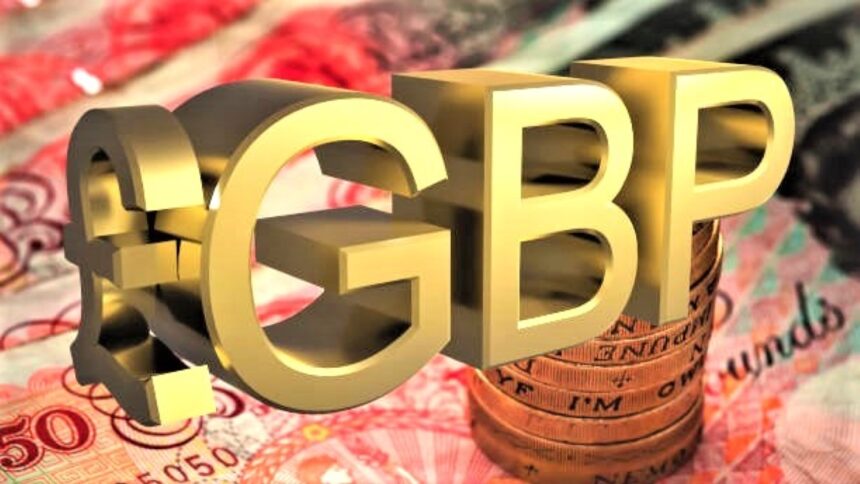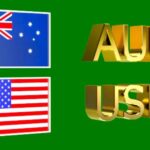Pound Slumps as US-China Slash Tariffs: Trade Truce Fuels Dollar Rally
The Pound Sterling (GBP) suffered a significant blow against the US Dollar (USD) on Monday, falling sharply below the psychological level of 1.3200. The dramatic slide came in response to a surprise announcement from US and Chinese officials that the two economic powerhouses had agreed to slash tariffs by a stunning 115% for a 90-day period, triggering a global market rally and reinforcing USD strength.
During North American trading hours, the GBP/USD pair sank to a session low of 1.3140 before staging a modest rebound. Despite this recovery, the pair remains down 0.8% on the day, consolidating near 1.3200.
US-China Tariff Deal Ignites Market Optimism
The major catalyst behind Monday’s market volatility was the announcement by US Treasury Secretary Scott Bessent that Washington and Beijing had agreed to lower import tariffs by 115% for a temporary 90-day truce. The unusual figure stems from a compounded reduction based on overlapping duties—current US tariffs sit at 10%, while Chinese levies are at 30%.
Although some key issues, such as fentanyl regulation, remain unresolved, the announcement marks a notable thaw in trade tensions between the two largest global economies. The US Dollar reacted strongly to the news, with the Dollar Index (DXY) surging to 101.80—its highest level since April 10—indicating broad-based demand for the Greenback.
Implications for the Federal Reserve: Rate Cuts Back in Play
This surprise trade truce has reignited speculation that the Federal Reserve may soon resume its monetary easing cycle. With the trade war having been a major driver of inflation concerns, the rollback in tariffs is expected to ease upward pressure on consumer prices in the US.
If inflation expectations decline further, the Fed could feel more comfortable restarting interest rate cuts, especially given the paused easing cycle since January. Market pricing for a rate cut in the next two FOMC meetings has jumped notably since the announcement.
BoE Cuts Rates, But Policy Remains Cautious
On the UK front, the Bank of England (BoE) also took a dovish turn last week by cutting interest rates by 25 basis points to 4.25%. Despite the rate cut, the BoE reiterated a “gradual and cautious” approach to monetary policy. The vote split among Monetary Policy Committee (MPC) members showed divisions, with Chief Economist Huw Pill and Catherine Mann voting to keep rates steady.
Deputy Governor Clare Lombardelli defended the rate cut, citing ongoing disinflationary trends and favorable trade developments. In her remarks during the European session, she hinted that more cuts are likely in the coming months, stating that current policy remains “restrictive.”
Pound Shows Resilience vs Peers, But Buckled Under USD Strength
Despite its fall against the surging US Dollar, the British Pound managed to edge higher against other major currencies early in the week. This relative strength was underpinned by cautious optimism around the UK’s economic resilience and the BoE’s commitment to a measured easing cycle.
However, the Cable (GBP/USD) pair remains highly vulnerable to shifts in global risk sentiment and the strength of the US Dollar, which has rebounded powerfully since the easing of trade tensions.
Key Data Ahead: UK Jobs and US CPI on Tuesday
Looking ahead, traders will closely watch the upcoming UK employment report and the US Consumer Price Index (CPI) release, both scheduled for Tuesday.
UK Jobs Report:
- Jobless rate: Expected to rise slightly.
- Wage growth: Projected to slow down modestly.
US CPI (April):
- Core CPI (MoM): Forecast to rise at a faster pace than the previous month.
- Headline CPI: Expected to remain elevated but stable.
These releases will be pivotal in determining the near-term direction for the Pound . Strong US inflation data could cement expectations of Fed hawkishness, pushing the Dollar even higher, while disappointing UK jobs figures may reinforce expectations for more BoE rate cuts.
BoE’s Pill Pushes Back on Global Trade Concerns
Speaking to reporters on Friday, BoE’s Chief Economist Huw Pill emphasized that his vote against the rate cut was driven by concerns about lingering domestic inflation pressures, rather than fears stemming from global trade dynamics. He downplayed the potential impact of US-China tariff changes on the UK economy, noting that “we’re not seeing a dramatic shift.”
His remarks suggest internal divisions within the BoE regarding how external developments, like trade policy, should influence monetary policy.
US-China Talks Yield “Substantial Progress” in Geneva
Over the weekend, key trade officials from the US and China met in Geneva for what has been described as breakthrough discussions. US Trade Representative Jamieson Greer and China’s Vice Commerce Minister Li Chenggang both emphasized the significance of the agreement.
Key Quotes:
- Scott Bessent (US Treasury Secretary): “We’ve made substantial progress in resolving key trade issues with China.”
- Jamieson Greer (US Trade Rep.): “The deal will help us reduce our trade deficit meaningfully.”
- Li Chenggang (China Vice Commerce Minister): “This is good news for the world economy.”
These statements helped ease investor concerns about prolonged economic damage from trade frictions, fueling a broad rally in global equities and demand for US-denominated assets.
Technical Analysis: Pound Testing Key Support Zone
From a technical standpoint, GBP/USD is now testing a crucial support zone between 1.3130 and 1.3150. A decisive break below this region could open the door to further losses, potentially toward the 1.3000 level. On the upside, resistance lies at 1.3240 and then at 1.3300, where selling interest is expected to reemerge amid a strong US Dollar environment.
Market Sentiment: Dollar Bulls Take the Driver’s Seat
Overall, sentiment continues to favor the US Dollar in the wake of improving trade relations and potential Fed easing. The combination of global macro developments, central bank divergence, and upcoming economic data will likely keep the GBPUSD pair under pressure.
Unless the UK surprises markets with stronger-than-expected employment figures or the US CPI comes in below forecasts, the near-term trajectory appears skewed toward further GBP weakness.
[faq-schema id=”39558″]









